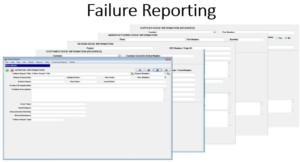FRACAS/CAPA Module Overview
The Quality Plus® FRACAS/CAPA module is designed to provide you with the tools you need for failure reporting, analysis and corrective Action. Regardless of the failure type or when it occurs in the product life cycle, the FRACAS/CAPA module helps a company to determine the potential root causes of a failure in a matter of minutes so it can be rapidly resolved and prevented in the future. Dynamically linked to the Requirements Risk Management, Design Risk Management, Usage Risk Management and Manufacturing Process Risk Management modules, the FRACAS/CAPA module allows the company to use risk-based thinking to risk optimize corrective and preventative actions.
Tools included in the module are:
- FRACAS Failure Report;
- Rapid Integrated Problem Solving (RIPS®);
- 8D Problem Solving;
- Short Form Problem Solving;
- Structured Problem Solving (SPS™) Matrices;
- Problem Report Smart Searches;
- Design and Process FMEA Problem Searches.
I have been working with Harpco Systems for 20 yrs and have seen how their products and services continue to improve to meet customer demands. Finding a disciplined approach to relate field performance to product design specifications is rare. There just is no uncomplicated way to do this correctly. Harpco's approach handles all the complication internal to their software so the engineers can focus on other aspects of their job. Because the known failure mechanisms and causes are mapped, this information can be used for problem solving and driving continuous improvement in manufacturing.
Harpco Systems provides some of the most technologically advanced FMEA software tools on the market……. Harpco Systems has become known as the Modern FMEA for a reason. Its structured, simplified and sustainable.
"We used Q Plus to achieve Q1 and ISO 16949 successfully at the Ford Motor Co. Monroe BAO Plant. The software promoted linked documentation that prevented issues at internal and external audits. Assured the quality documents at the operations production level had all relevant and concurrent information that was reviewed in the program files. QPlus allowed the program members to create a baseline "Hot End Exhaust" database that produced linked documentation from the DFMEA to the production visual aids the operators used to perform correctly."




